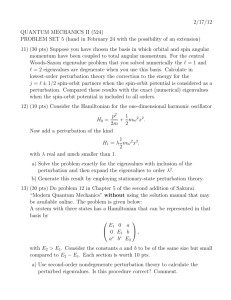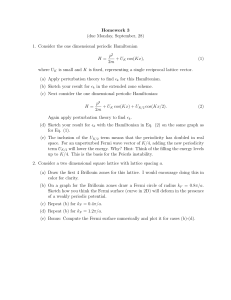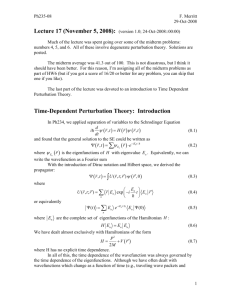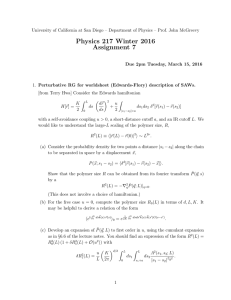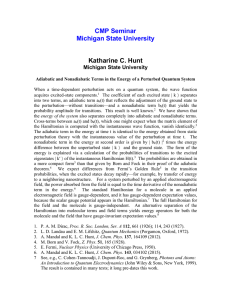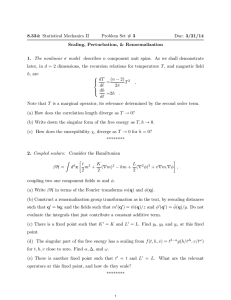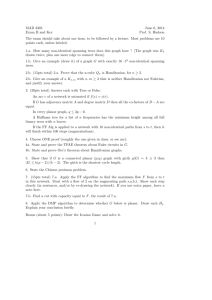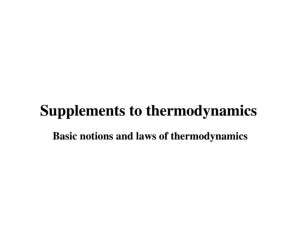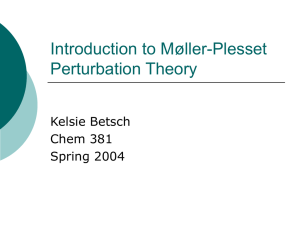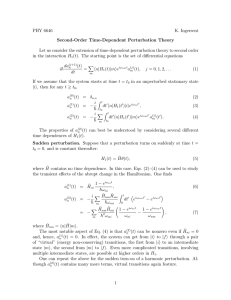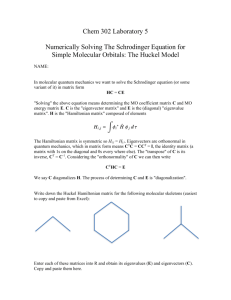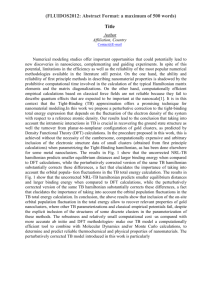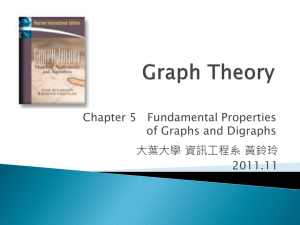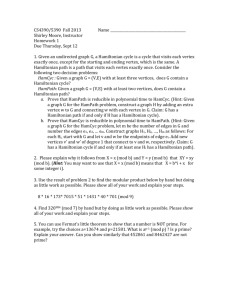TIPT
advertisement
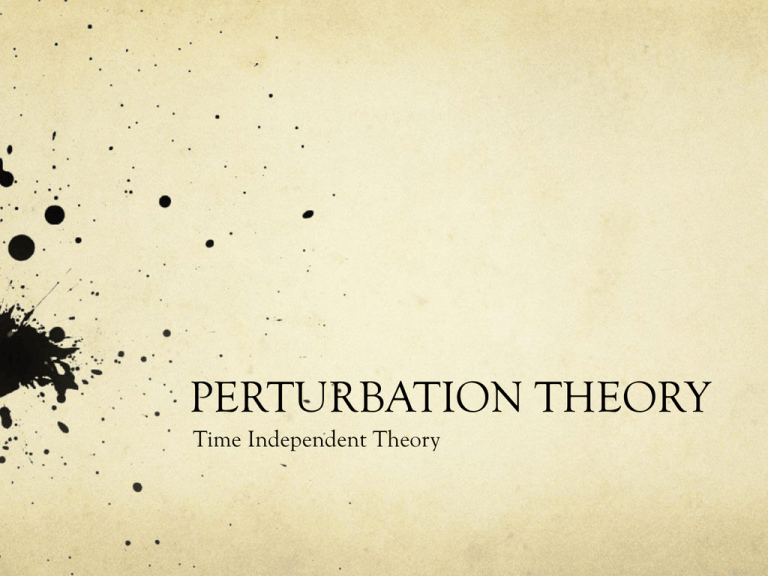
PERTURBATION THEORY Time Independent Theory A Necessity: Exactly solvable problems are very few and do not really represent a real physical system completely. In many cases, the primary interaction on the system maybe exactly solvable and is hence the dominant contribution. We develop a theory which takes the exact solution as a base to build on, for more accurate description of the system. Recipe of the Theory Take the Hamiltonian of an exactly solvable problem. Add a perturbative term to the original Hamiltonian, satisfying the condition, The terms in the perturbation need to be smaller than the energy differences of the original Hamiltonian. Introduce a parameter l as the co-efficient of the perturbative term in the Hamiltonian, to observe the effect of the Hamiltonian. Eigen Value changes with perturbation intensity Observation: Start with a negligible value of l such that the perturbation is very minuscule to start with. This causes the change in the Eigen-values and functions to vary slightly from the original Hamiltonian. Smoothly varying the parameter l smoothly varies the new solution as well. E40 E30 E20 E10 l1 l Taylor Expansion The implication is, the existence of a continuous Eigen-functions and Eigen-values: l and E l for an Hamiltonian parameterized by l as i i ˆ ˆ ˆ H H 0 lW Hence for small values of perturbation, the solutions can be expanded in Taylor series around the known solution with l = 0, as l l l ... 0 i 1 i i 0 1 2 2 3 3 i 2 i 3 E i E i lE i l E i l E i for the eigen-value equation: Hˆ i The original equation: Hˆ 0 E i i i E i i 2 3 ...






